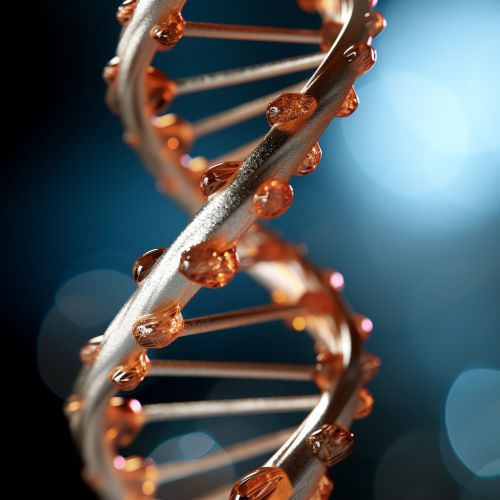Natural DNA Damage
Introduction
Deoxyribonucleic acid (DNA) is the primary carrier of genetic information in all living organisms and many viruses. Despite its critical role in biological systems, DNA is susceptible to damage from various sources, both internal and external. This article discusses the phenomenon of natural DNA damage, its causes, effects, and the mechanisms that cells employ to repair such damage.


Causes of DNA Damage
DNA damage can occur due to a variety of factors. These can be broadly classified into two categories: endogenous and exogenous.
Endogenous Causes
Endogenous causes of DNA damage originate from within the organism itself. These include:
- Reactive oxygen species (ROS): These are chemically reactive molecules containing oxygen, produced as a byproduct of normal cellular metabolism. High levels of ROS can cause oxidative stress, leading to DNA damage.
- DNA replication errors: Errors during DNA replication can lead to mismatched base pairs, insertions, or deletions in the DNA sequence.
- Spontaneous mutations: These are changes in the DNA sequence that occur naturally over time, without any apparent cause.
Exogenous Causes
Exogenous causes of DNA damage originate from outside the organism. These include:
- Ultraviolet (UV) radiation: UV radiation, particularly UV-B and UV-C, can cause DNA damage by inducing the formation of pyrimidine dimers.
- Ionizing radiation: This type of radiation, which includes X-rays and gamma rays, can cause DNA damage by inducing double-strand breaks.
- Environmental toxins: Various chemicals and toxins present in the environment can interact with DNA, causing damage.
Types of DNA Damage
There are several types of DNA damage that can occur, depending on the cause and the specific DNA sequence involved. These include:
- Base modifications: These involve changes to the chemical structure of the DNA bases, such as methylation or oxidation.
- DNA adducts: These are bulky lesions caused by the covalent binding of small molecules to DNA.
- DNA strand breaks: These can be single-strand breaks (SSBs) or double-strand breaks (DSBs), depending on whether one or both DNA strands are broken.
- Cross-links: These are covalent links between different parts of the DNA molecule, which can interfere with DNA replication and transcription.
Effects of DNA Damage
DNA damage can have various effects on the cell, depending on the type and extent of the damage. These effects can include:
- Mutations: DNA damage can lead to changes in the DNA sequence, which can result in mutations if not repaired correctly.
- Genomic instability: Accumulation of DNA damage can lead to genomic instability, which is a hallmark of many cancers.
- Cell death: Severe DNA damage can trigger programmed cell death, or apoptosis, as a protective mechanism to prevent the propagation of damaged DNA.
- Aging: Accumulation of DNA damage over time is thought to contribute to the aging process.
DNA Repair Mechanisms
Cells have evolved several mechanisms to repair DNA damage and maintain genomic integrity. These include:
- Base excision repair (BER): This pathway repairs small, non-helix-distorting base lesions, such as those caused by oxidation or alkylation.
- Nucleotide excision repair (NER): This pathway repairs bulky, helix-distorting lesions, such as those caused by UV radiation or chemical adducts.
- Mismatch repair (MMR): This pathway corrects errors that occur during DNA replication, such as mismatched base pairs.
- Non-homologous end joining (NHEJ) and homologous recombination (HR): These pathways repair DNA double-strand breaks.
Conclusion
Natural DNA damage is a common occurrence in all living organisms, resulting from a variety of endogenous and exogenous factors. While DNA damage can lead to mutations, genomic instability, cell death, and aging, cells have evolved sophisticated mechanisms to repair DNA damage and maintain genomic integrity. Understanding the causes, effects, and repair mechanisms of DNA damage is crucial for developing strategies to prevent and treat diseases associated with DNA damage, such as cancer and neurodegenerative disorders.
